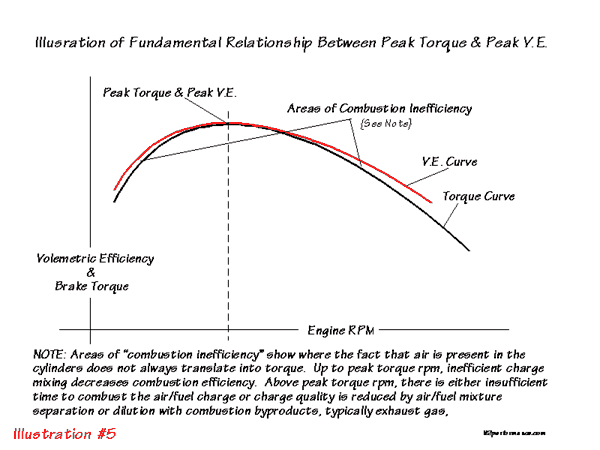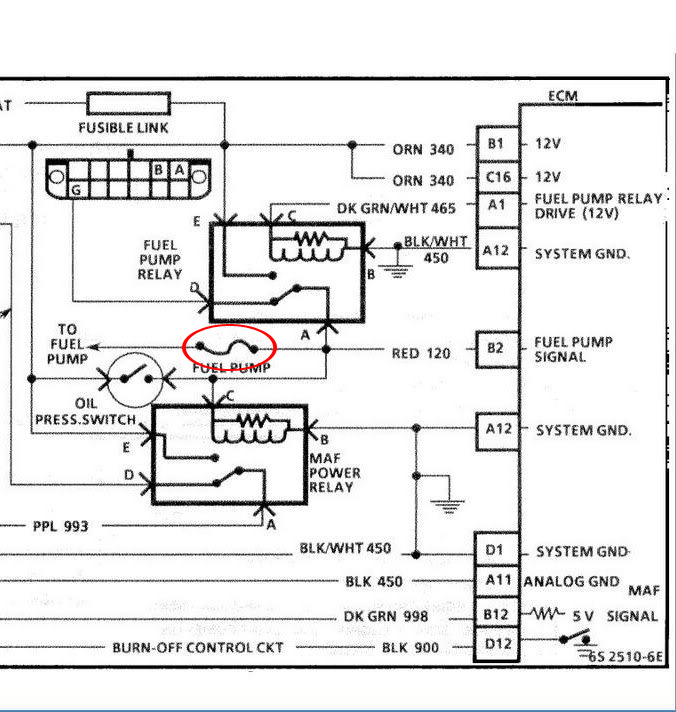Oneslyfox1981 said:I have a 84 crossfire injection corvette I set the timing and it misses horribly if I advance the timing it idles high but takes gas better but still misses and stalls the computer throws code 51 I have two ECMs I've tried and two different chips still same problem and same code

http://www.technovelocity.com/chevyhack ... olish.html
Code #12: Normal System No Codes.
Code #13: Oxygen Sensor Circuit:
Code #14: Coolant Sensor Circuit Low.
Code #15: Coolant Sensor Circuit High.
Code #21: Throttle Position Sensor High.
Code #22: Throttle Position Sensor Low
Code #24: Vehicle Speed Sensor.
Code #33: Manifold Absolute Pressure Sensor Signal High.
Code #34: Manifold Absolute Pressure Sensor Signal Low
Code #42: Electronic Spark Timing.
Code #43: Electronic Spark Control..
Code #44: Lean Exhaust Indication.
Code #45: Rich Exhaust Indication.
Code #51: PROM Error.
Code #55: Defective ECM.
without testing and verifying what your dealing with your guessing as to the cause,while you might be dealing with a defective chip or loose electrical contact, or broken wire it could also be related to a defective sensor, you really need a SHOP MANUAL, matching your year corvette, not an auto parts store chilton or similar reference book,the chances are very good that either the outer damper ring is loose and the timing marks no longer indicate TRUE TDC or
THAT YOUR TIMING CHAIN HAS A GOOD DEAL OF SLACK, OR MAYBE THE CAM HAS A WORN LOBE,the first thing Id suggest is verifying both TDC on the damper and true TDC match,and testing your fuel pressure, would help.
verify the ignition advance and veriify your timing,check for loose or rotten vacuum lines and loose electrical connectors and adjusting your valves and doing a compression check sure would be useful in determining your problems source
remember the shop manual for your year corvette remember you'll YOULL want to read the shop manual for instructions for specific. info that applies, to your car and year

1984: ECM Codes
Code #12: Normal System No Codes.
Code #13: Oxygen Sensor Circuit.
Code #14: Coolant Sensor Circuit Low.
Code #15: Coolant Sensor Circuit High.
Code #21: Throttle Position Sensor High.
Code #22: Throttle Position Sensor Low.
Code #24: Vehicle Speed Sensor.
Code #33: Manifold Absolute Pressure Sensor Signal High.
Code #34: Manifold Absolute Pressure Sensor Signal Low.
Code #42: Electronic Spark Timing.
Code #43: Electronic Spark Control.
Code #44: Lean Exhaust Indication.
Code #45: Rich Exhaust Indication.
Code #51: PROM Error.
Code #55: Defective ECM.



will this help?






https://www.corvettemods.com/C3-C4-...ke-Manifold--Crossfire-Injection_p_14318.html

if your thinking of buying a renegade intake upgrade here is a damn impressive limited time sale
this infos bound to be helpful at times
Sensor Locations
Sensor
Location
Engine Coolant Temperature Sensor. Front of engine, below Throttle Body.
Engine Oil Temperature Sensor. Left rear of engine, just above the oil filter.
Oil Pressure Sender/Switch. Top, left hand rear of engine.
Fuel Quantity Sender. Top of fuel tank, beneath filler pipe escutcheon panel.
MAT (Manifold Absolute Temperature Sensor). Underside of manifold air plenum at rear.
Outside Temperature Sensor. Right side of engine, top right corner of radiator.
In Car Temp Temperature Sensor. Coupe: above left seat near interior courtesy light, Convertible: center of cargo compartment lid.
MAF (Mass Air Flow) Sensor. Front of engine ahead of throttle body.
Oxygen (O2) Sensor. Left side of engine, in exhaust pipe.
TPS (Throttle Position Sensor). Right side of throttle body at the front.
Sensor Outputs:
Sensor
Measured Value
Engine Coolant Temperature Sensor. 185 Ohms @ 210F, 3400 Ohms @ 68F, 7,500 Ohms @ 39 F.
Engine Oil Temperature Sensor. 185 Ohms @ 210 F, 3400 Ohms @ 68 F, 7,500 Ohms @39 F.
Oil Pressure Sender/Switch. 1 Ohms @ 0 PSI, 43 Ohms @ 30 PSI, 86 Ohms @ 60 PSI.
Fuel Quantity Sender. 0 Ohms @ Empty, 45 Ohms @ 1/2 Full, 90 Ohms @ Full.
MAT (Manifold Absolute Temperature Sensor). 185 Ohms @ 210 F, 3400 Ohms @ 70 F, 15,000 Ohms @ 40 F.
Outside Temperature Sensor. 4400 Ohms @ 60 F, 2200 Ohms @ 85 F.
In Car Temp Temperature Sensor. 4400 Ohms @ 60 F, 2200 Ohms @ 85 F.
MAF (Mass Air Flow) Sensor. .4 Volts @ idle, 5 Volts @ Full Throttle.
Oxygen (O2) Sensor. .1 Volt Lean Mixture, .9 Volt Rich Mixture.
TPS (Throttle Position Sensor). .54 Volts Idle, ~ 5 Volts Full Throttle.


RELATED INFO THAT MIGHT HELP
http://www.thecubestudio.com/CrossfireT ... sIndex.htm
http://garage.grumpysperformance.com/index.php?threads/got-a-cross-fire-corvette.640/#post-25767
renegade intake? for cross fires
with the cam you selected ,9.0:1-9.5:1 will work if your using aluminum heads without issues http://www.summitracing.com/parts/crn-114122 http://garage.grumpysperformance.com/index.php?threads/dynamic-vs-static-compression.727/...
garage.grumpysperformance.com
Last edited by a moderator:
























